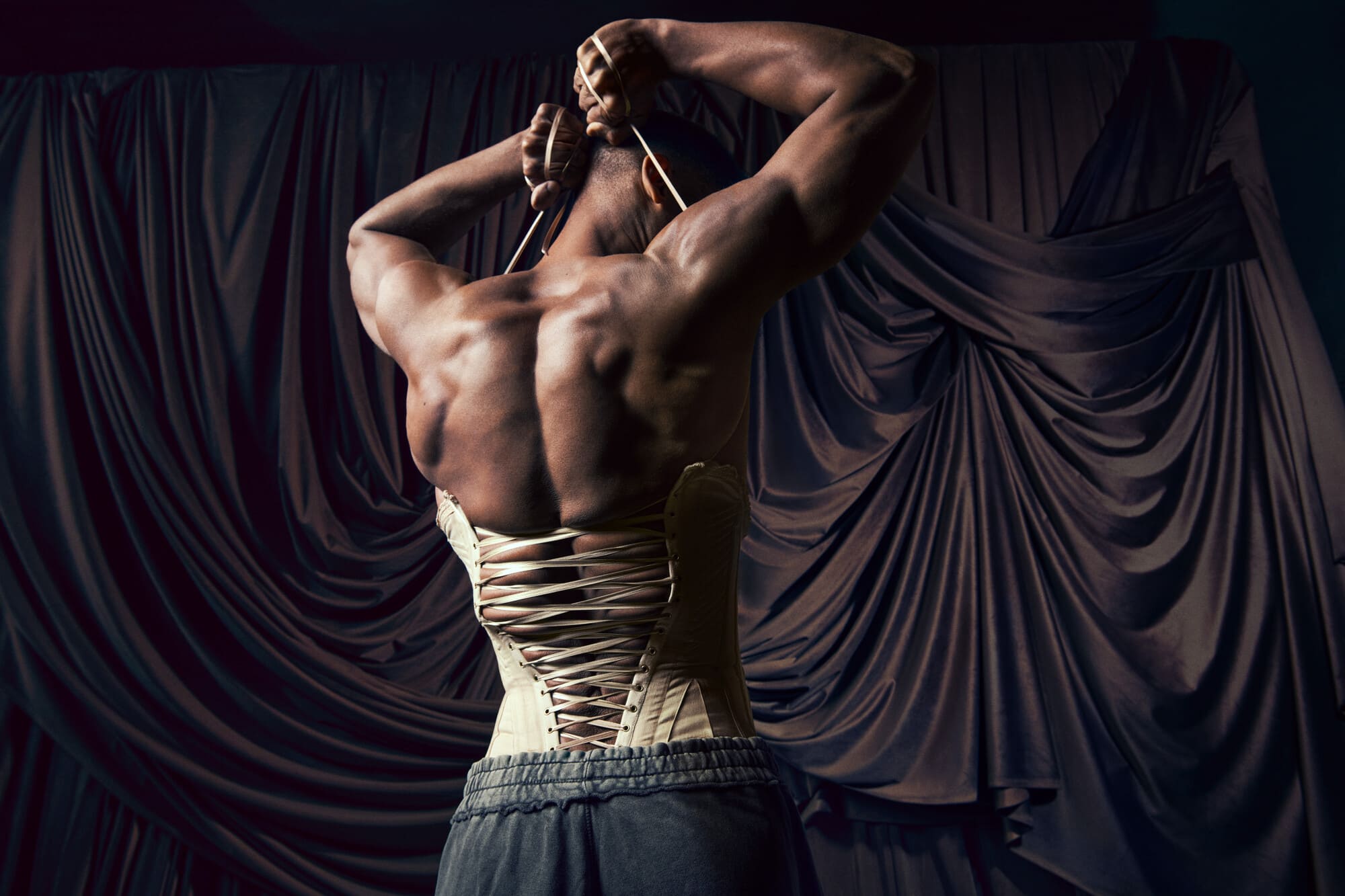Resistance, Part 1: Gravity
Resistance training is a dance with gravity. Practiced mindfully, it can enhance the quality, power, range, and expressive potential of all our movements.

This will be the first of three posts examining different facets of resistance. This one discusses how resistance to gravity shapes our bodies and informs our movements. The second one will focus on the role of resistance in musical vibration and sound. The third will explore how cultures evolve or degenerate, depending on the extent to which they embrace or resist change.
Our relationship to gravity defines us. It literally shapes us.
Our birth marks our passage from the weightless buoyancy of the womb to the weighty world of substance. We arrive with very little context or understanding.
However, there is one thing we understand immediately, which is that there is an Up, and there is a Down.
Resisting gravity is how our bodies develop. We come into the world too weak to lift or support our own heads, barely able to flail our arms and legs around until we’re exhausted from the effort. Nevertheless, we see many things that excite and interest us. We strive to move towards and reach for them, and in the striving and reaching we develop strength. We see bigger, stronger creatures moving around. We imitate them, and in the imitating we develop coordination. We push our shoulders up off the floor, collapse, try again, and finally we crawl, lifting one hand in tandem with the opposite knee, urging our limbs a few inches forward, and repeating on the other side. We grasp objects with our hands, pick them up, drop them, and pick them up again, gradually developing enough strength and fine motor control to not only hold but also manipulate them. Our strength, coordination, and balance continue to improve, eventually enabling us to stand and walk upright.
All thanks to gravity, and the way our bodies adapt to the requirement of resisting it in order to move around.
Here’s how it works:
- Intention ignites an impulse to move towards and/or reach for something
- Our nervous system mobilizes our tissues to engage in the desired movement. This happens whether or not we yet have the capacity to execute the movement, because even if we don’t, making the effort is the means whereby we expand our capacity.
- Our tissues attempt to execute the patterns of fascial and muscular contractions and releases that would result in the desired movement. When the tissues contract, they shorten, pulling bones and other structures closer together; when the tissues release, the bones and other structures move farther apart. All the contracting and releasing takes place within an environment governed by gravity, so the energy required for movement is compounded by the energy required to keep ourselves from collapsing. That may sound like a lot of complicated math, but your body performs the calculus effortlessly. For example, if you were to decide to stand up right now, your quadriceps, glutes, and surrounding tissues would automatically contract and shorten, producing sufficient force to compensate for the downward pull of gravity and extend your knees and hips.
- If your lower extremities and core possess sufficient strength, coordination, and innervation, what happens is that you stand up. Your intention ignited the impulse to move; your nervous system delivered the command to the necessary tissues; the tissues responded with adequate force production to stand you up.
- If your lower extremities and core lack sufficient strength, coordination, and innervation, what happens is that you try to stand up. The tissues still mobilize in response to your intentions, but without adequate force production, you remain seated. The good news is that there are many ways to compensate while you develop force production in your legs. You can push yourself up off the chair with your arms, or a trusted friend can help you to your feet. This is how all of us initially learn to stand and walk. The strength and coordination develop gradually in response to our intentions and repeated efforts.
- Eventually, the able-bodied among us develop the strength and coordination to sit, stand, walk, and otherwise move ourselves around unassisted.
Having thus mastered gravity, we may forget that it was once a force that required resisting. At least while our status as able-bodied holds up.

Back when I used to respond to cute prompts on social media, there was one inviting me to poorly explain what I do for a living. I wrote, “I make people pick things up and put them down again.”
That is essentially what strength training, aka “resistance training”, is: A dance with gravity. I was training people to elegantly pick things up and put them down again with a view to enhancing their strength and coordination in specific ways. Sometimes what they were picking up and putting down was their own body weight. Sometimes they would push and pull on things while keeping their balance, aka not falling down. Whatever the modality, training the physical body is always a dance with gravity.
How it works, is precisely how it worked when you were first learning to crawl, stand, and walk. When you pick things up, or pick yourself up, the process begins with your intention. The intention triggers an impulse to move. The impulse mobilizes your tissues to contract and shorten, increasing the distance between the object you are picking up and the ground. When you put the thing down again, your tissues release and lengthen, decreasing and eventually eliminating the distance between the object and the ground. The point of the exercise is enhancing your strength and coordination in a specific way, so it is important to make sure the object you are picking up and putting down adds enough load to the movement to make it challenging, but not so much that you cannot perform the movement smoothly and elegantly. The point is not to leverage all of the strength in your body to lift the heaviest object that you can. The point is the dance with gravity. When performed elegantly, that is how the act of resisting gravity results in enhanced strength and coordination.
Here’s how it works:
- Select a functional movement pattern that you would like to be able to perform with increased strength, coordination, and grace. I will take as an example the movement pattern involved in sitting down and standing up.
- First, lower yourself onto a chair and stand back up without adding load to the movement (i.e. no dumbbells or other weights). Notice what happens. Are you able to sit down slowly, without grasping the chair for support? Do you lower yourself gradually onto the chair, or is there a short, uncontrolled drop at the end? Are you able to stand up with smooth, controlled movement, or is a burst of energy required to get you out of your seat? If you are able to perform these movements smoothly and effortlessly, great. If you find that some parts of the process feel more continuous and well-controlled than others, also great, because the point is to increase the strength, coordination, and grace you bring to these movements. Noticing inconsistencies tells you where to focus your attention throughout an exercise.
- Now, perform the movement sequence of lowering yourself down and standing back up without the chair (ideally with a nearby stable rail or structure you can grab for balance if necessary). The exercise you are now performing is called a squat.
- The part of the squat where you are lifting the weight (standing up) is called the concentric phase. Your quadriceps, glutes, and related tissues engage, contract, and shorten; your hips and knees extend, raising you up to a standing position.
- The part of the squat where you are lowering the weight (sitting down) is called the eccentric phase. Your quadriceps, glutes, and related tissues gradually release, moving you down towards a sitting position. Note that even though you are lowering the weight, the muscles and tissues remain engaged throughout the movement—if instead they all just released, you would not be able to control the rate and direction of the movement and might fall all the way down.
- The effective range of motion for this exercise is dictated by how far you can “sit down” while still controlling the movement well enough to smoothly and easily stand back up again.
- Adding load to the movement (with dumbbells or other weights) causes the muscles to adapt to the increased weight and become stronger.
- Increasing range of motion for the movement (e.g. using cables or other props to support a deeper squat) causes the fascia to adapt and become more responsive and flexible. Increased range of motion for a given movement can also increase the level of strength that can be expressed through that movement, because the farther the fascial tissues can comfortably be stretched, the more energy potential they can store.
- However, adding excessive load to the movement will reduce range of motion and/or result in inelegant, uncontrolled movements. If you can’t squat as low as you would expect, or find that your movements become uneven or abrupt, reduce the load (or just be done for the day).
Resistance training is a dance with gravity. Practiced mindfully, it can enhance the quality, power, range, and expressive potential of all our movements.

Once upon a time in pre-French Revolution Europe, the aristocracy—the OG one percenters—enjoyed so sedentary a lifestyle that most physical activity was related to recreation. Among the other 99%, most who were sufficiently able-bodied were required to labor from dawn to dusk.
Nowadays, we drive or take public transportation to get where we want to go. Once we’re there, we usually spend most of our time sitting down. Our bodies no longer become strong and flexible as a consequence of living day to day. Movement has now become optional for a much larger percentage of the population, and we find ourselves in need of personal fitness protocols.
In this culture, if we want to be fit, we need to make fitness a priority. We also need it to be expedient. That is why people generally work out with the sole strategy of doing what the fitness magazine, the exercise video, and/or the personal trainer tell them to do. They may work out with a vague goal of getting in shape, having more energy, or losing weight. They may work out with a more specific medical or aesthetic goal, like alleviating low back pain or cultivating washboard abs. But for the sake of expediency and consistency, people tend to exercise by following someone else’s directions, often while overriding some degree of internal resistance in order to get themselves to the gym.
But it’s one thing to resist gravity in order to reach for something you desire, and quite another to override an internal resistance to exercise.

When you engage in movement for the purpose of reaching for something you desire, you’ve got skin in the game, pun very much intended.
I do. Since my cancer diagnosis and treatment, I haven’t yet been able to return to Mt. Mansfield in Vermont, a trail I really enjoy hiking. I would very much like to. I also know that if I want to enjoy a high quality experience of the hike, I will need to condition my still-rebounding body adequately. So I am working on my squats and my cardio. I am working on restoring full range of motion to my lumbo-pelvic-hip complex. I perform my exercises mindfully. I add load when I am able to handle the increased challenge without compromising form or range of motion. I reduce load to increase my legs’ range of motion.
The entire experience is interesting and enjoyable for me, and I am seeing results. Consequently, I continually feel strong motivation to exercise. There is no internal resistance for me to override.
I realize that my enjoyment of exercise makes me an outlier, particularly in light of my early traumatic experiences with Phys Ed. At some point, movement stops feeling like fun for many of us, if not most. At some point, we forget about the pleasure of physically reaching for the things that excite and interest us, perhaps because over time the inhibitions we encounter cause us to retreat further and further into our minds.
When I joined the training team at the brand-new Time Warner Center Equinox Fitness Club in 2004, among my first clients was an ambitious hedge fund manager. He had been a star athlete in school, but had since become laser-focused on success. Now he was successful, but de-conditioned. I enjoyed helping him get back in shape—his muscle memory and coordination came back quickly, and he was always up for a challenge. But it kind of bothered me to realize that neither he nor most of my other clients had hired me to actually teach them anything. They had hired me primarily to have someone to show up for. My job was to make them exercise while being pleasant company. In other words, to provide them with motivation.
Sure, it was also my job to design and supervise their workout regimen. But it would be one thing for them to resist gravity in order to reach for something they desire, quite another for them to repeatedly pick heavy things up and put them down, over and over again, for no good reason except that I was telling them to. Initially they’d had a more compelling reason to show up for me other than my sparkling disposition. Usually something to do with aesthetics or a physician’s recommendation. But only rarely did their reason have anything to do with functional movement.
When you’re motivated to exercise by a desire to improve functional movement, the process is engaging, interesting, and fun, even in those moments that are comparatively challenging and uncomfortable.
When you’re motivated to exercise by pretty much anything else, you aren’t actually motivated to exercise. To the extent that you feel motivated at all, it’s motivation to produce a result, not motivation to engage in a practice. You may achieve the results you desire, but the process of reaching for them is likely to be a drag.
Singing is a delightful example of functional movement that can be improved with exercise. Part 2 of this series, Flow, will explore how principles of resistance contribute to producing and shaping vocal fold vibration.
If this post resonated with you, please subscribe to my Ghost. Subscriptions can be either free or paid.
- Your attention is your most valuable currency, so free subscriptions are deeply appreciated!
- Paid subscriptions from those who can comfortably afford it help transition my writing from unpaid to paid labor.
Schedule a complimentary consultation for voice lessons here.
Schedule a voice lesson here.





